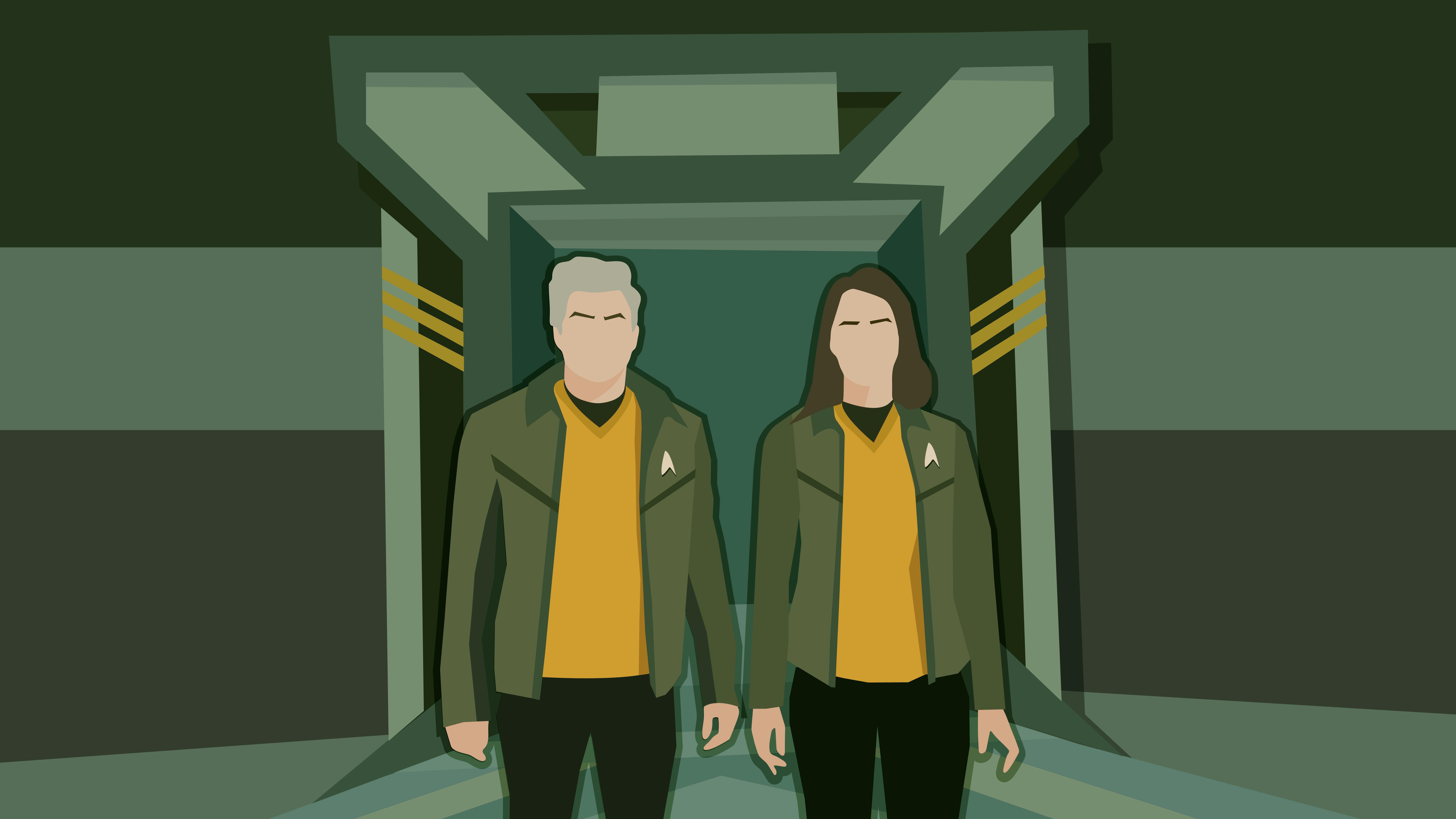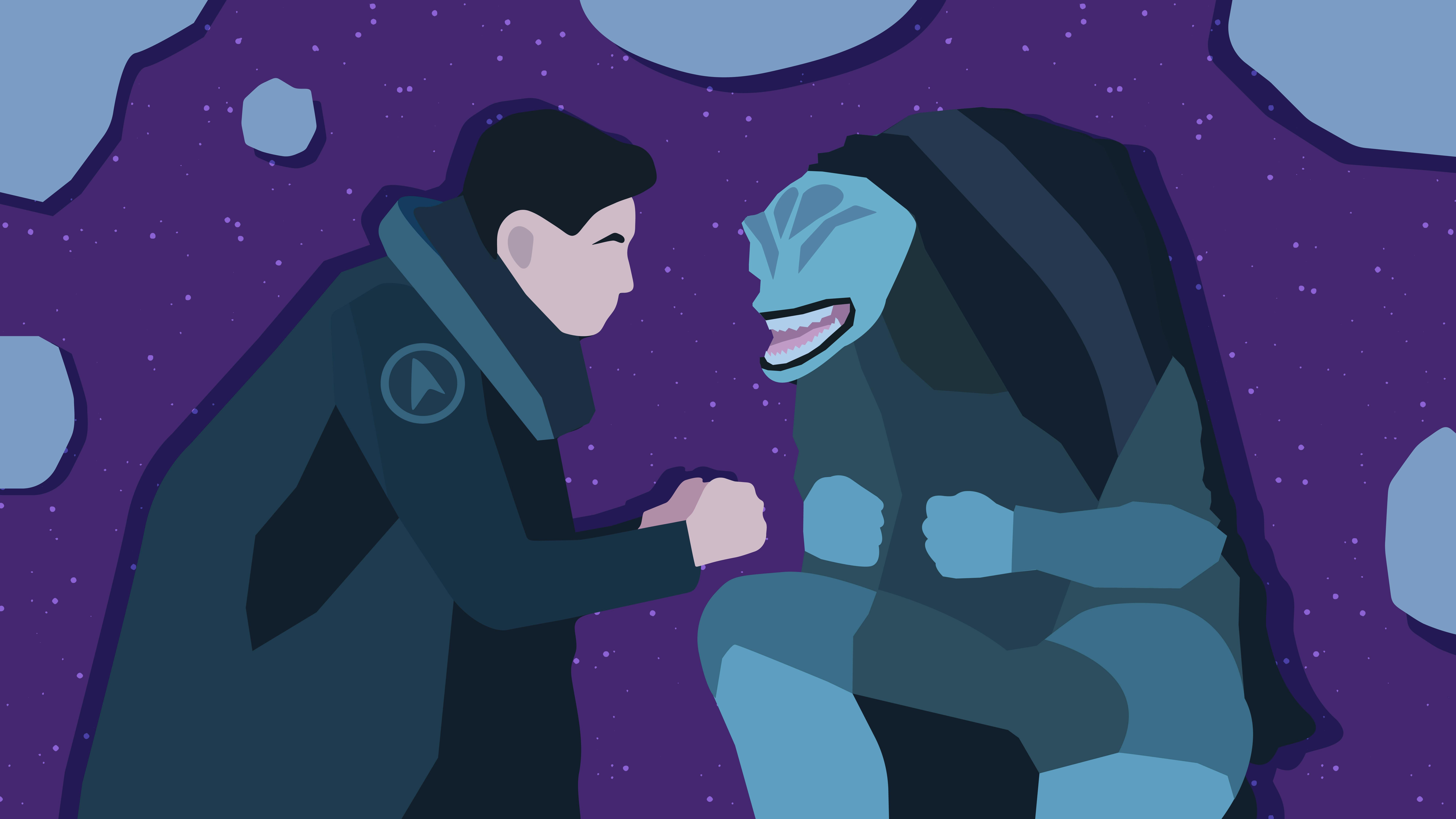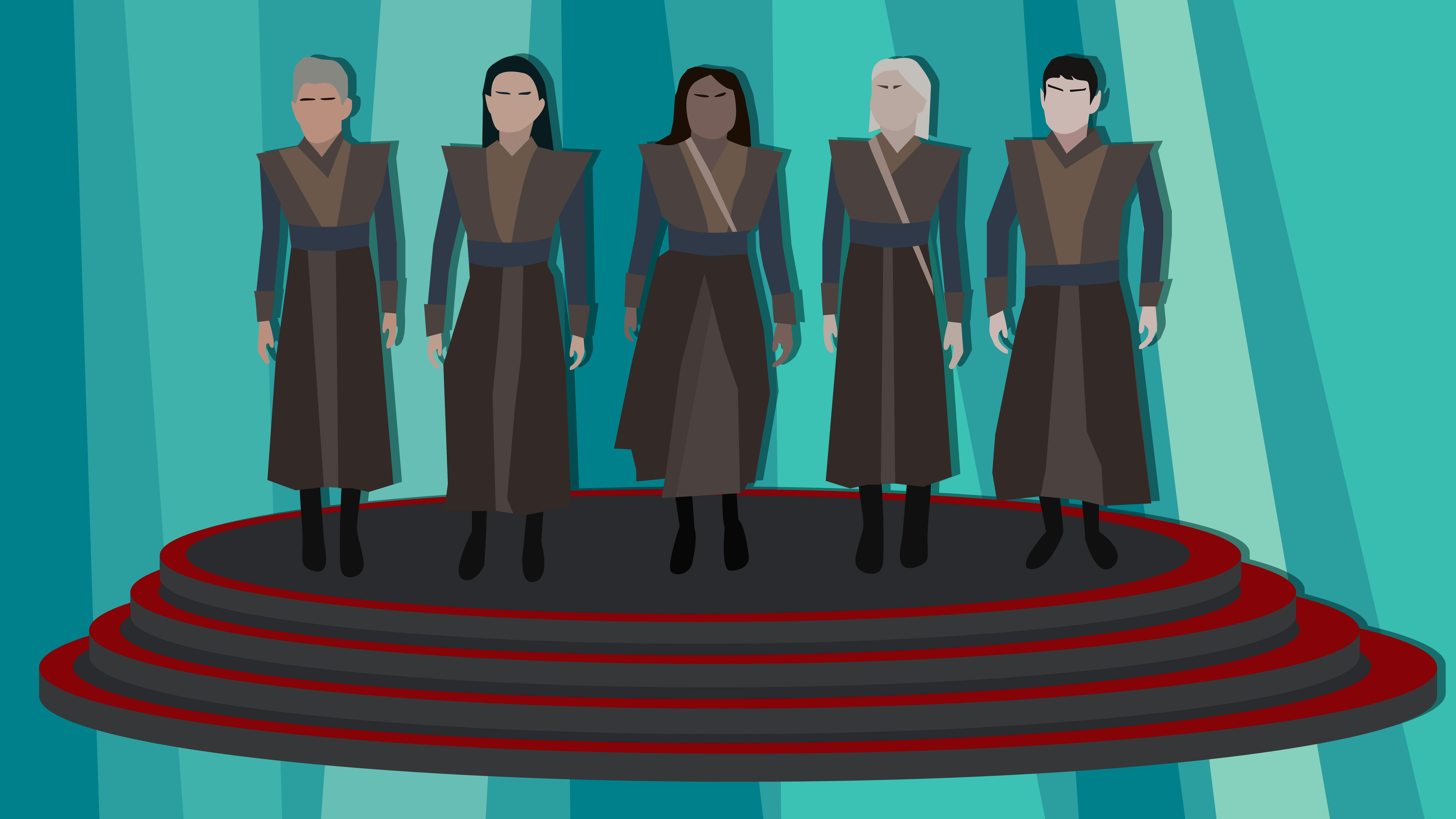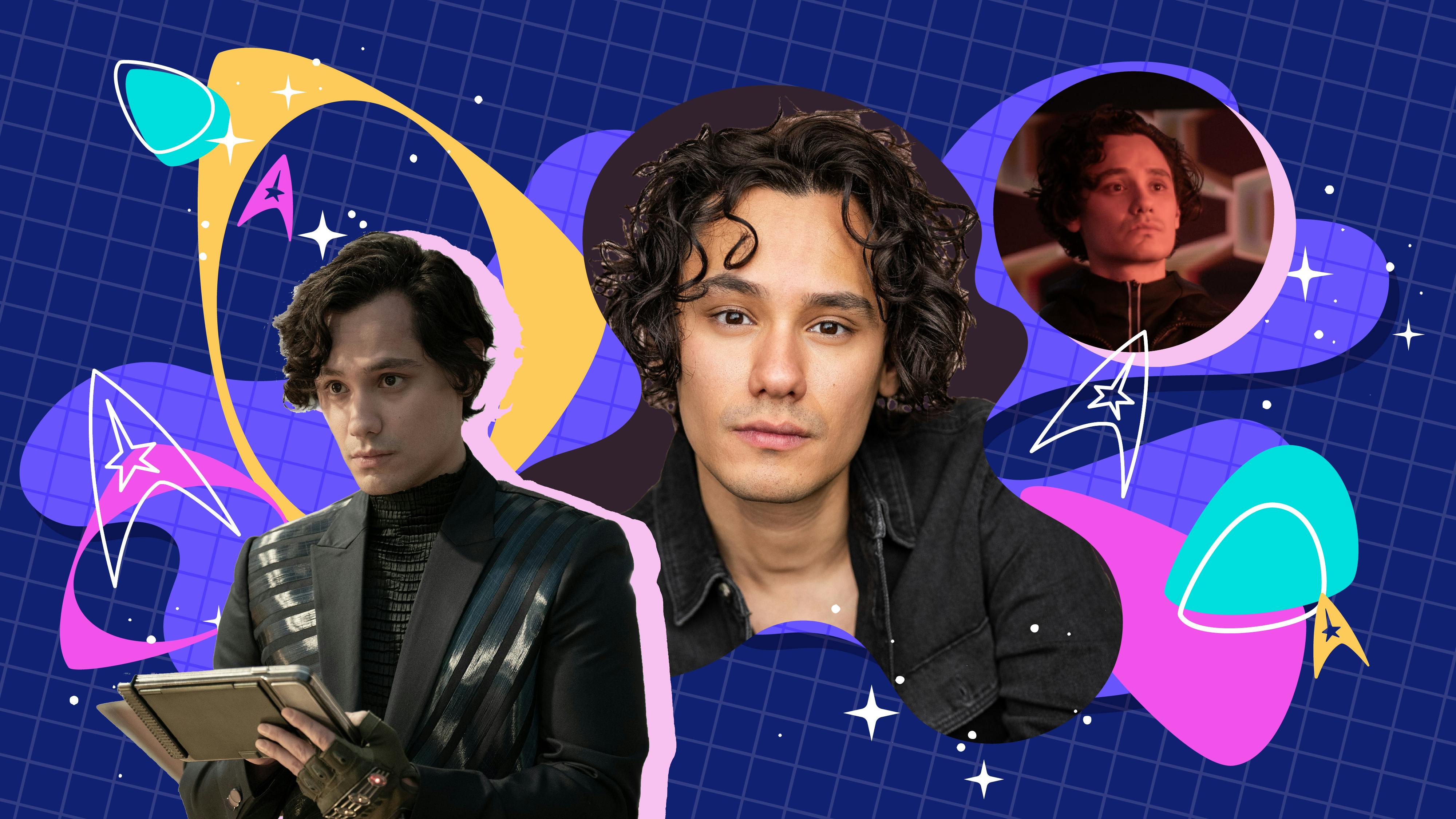Published Mar 7, 2018
EXCLUSIVE: Discovery Props Master Mario Moreira, Part 1
EXCLUSIVE: Discovery Props Master Mario Moreira, Part 1
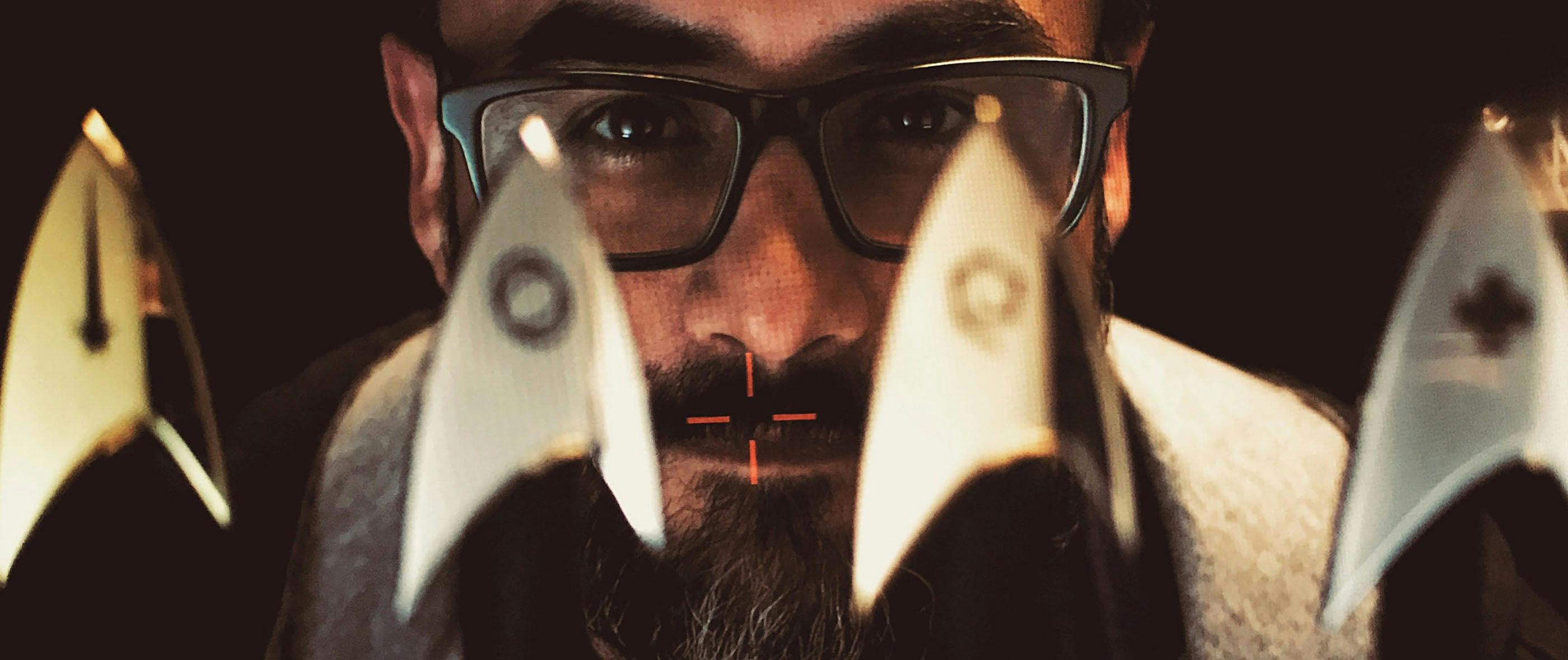
What do the gormagander meat, phasers, tranya, bat’leths, communicators, Emperor Georgiou’s sword and so much more from season one of Star Trek: Discovery all have in common? That’d be Mario Moreira, the show’s Props Master, who had a hand in designing, creating/recreating and building all of the above with his team of artists and artisans. As he geared up to work on Discovery’s sophomore season, Moreira – whose credits include several Saw movies, Splice, Alphas, Copper and Heroes Reborn -- took some time to chat with StarTrek.com about his year-one experience. Check out the first half of our conversation below, and visit StarTrek.com again tomorrow to read part two.
How familiar were you with Star Trek when Discovery came along?
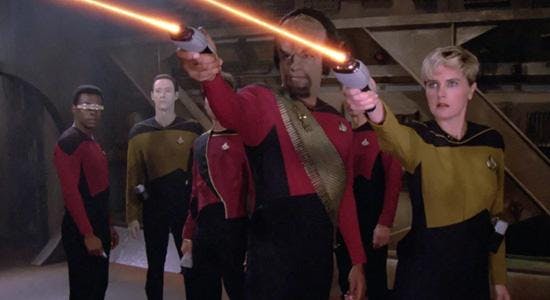
I grew up with The Next Generation as my first intro into Trek. For me, Star Trek is Next Generation and further on after that. My introduction to The Original Seriescame once I got the job on this show, when I started going back and researching. Knowing how close in time we were to The Original Series, it definitely was the wise thing to do to go back and watch all of those episodes.
Not everyone is aware of what a Props Master is responsible for, especially a Star Trek series. Take us through that…
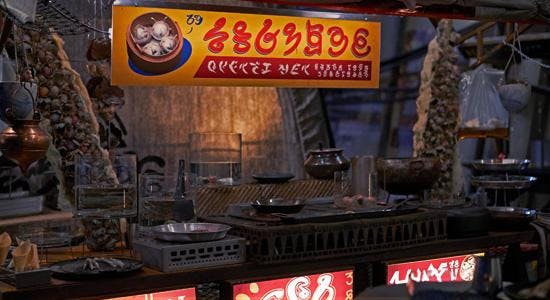
The Cliffs Notes version of what I usually tell people when they ask me what I do for a living or what a Props Master does is… a Props Master is responsible for everything an actor handles or interacts with on a film of television set. That is, if we're walking down a street and you look around at a typical street scene, people are carrying shopping bags. If it's raining, there's umbrellas. But then we go a little bit further into that. The rings on their fingers, the watches, their eyeglasses. Even when you look at the cars on the streets, we do their license plates. We do the taxi medallions on tops of taxis' hoods. We encompass a lot of things, but mainly we deal with things that actors interact with. Food, guns, phones, money… the list goes on and on.
Discovery is set before TOS, but in the real world, it was 2017, maybe even 2016 when you and your team got cracking. What was your mission statement, in terms of reconciling today's tech and props capabilities and the look of the future with those of the 1960's?
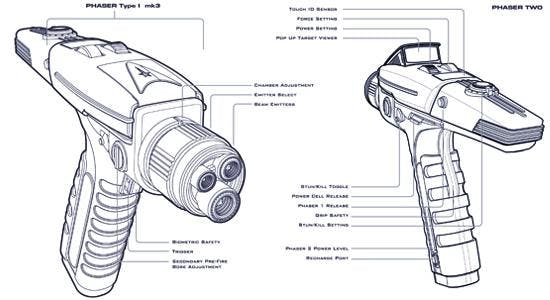
That's a good question. We were told this: We are doing a period piece set 200 years in the future. What I do first when I do period films that are set 200 years in the past is research. We learn what that culture or society used on a daily basis. For Star Trek, we had to look forward. So, we had to look at TOS, watch all the episodes, study the props, really figure out what they had in their technological language, what they used on a daily basis. That said, we've got really cool tools at our disposal now. We've got CNC machines that can create the aluminum shapes that you couldn't do five, 10 years ago. We've got 3D printers that are doing things that we couldn't do three months ago. We're able to create a much higher-tech prop than our predecessors were. That said, the look of our stuff really had to eventually reconcile with where Trek was going to be 10 years from now. We could take liberties. But we were tasked to think, "What is this going to look like 10 years from now, but 200 years from today?"
Generally speaking, how massive a playground is a Star Trek show for a props guy?
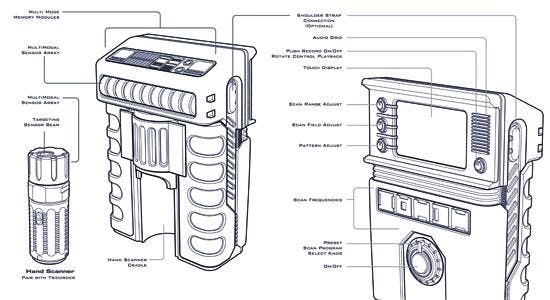
Oh, it's a fairy tale. We design and build I would say 90% of the props from scratch. Generally, on a science-fiction show, when we build props, we'll call them mutt builds. Say we want to do a high-tech grenade or something like that. We'll first figure out a shape. OK, it sort of wants to be a hockey puck shape. Then we'll go through some tech-type stores, we'll look around maybe at speakers or things like that, or we'll buy some cool Bluetooth things. We'll take those apart, find the interiors of them, and then we'll start looking at that as our base. Then we'll find some other things, glue it to it, paint it silver, add some LEDs. We're making things from things.
Whereas with Trek, we are tasked with, “Here is a sensor thing that we've got to make.” We’ll go into a meeting with a director. "I want it shaped like a football. I want it to do this. I want it to do that." It's like, "Awesome." And then I talk to my builders first and let them know what we're thinking. “Have we even invented this idea yet?” And if they're feeling that they're capable of building something like that, I'll talk to our designers, and then we'll start working together on building the prop to work with the idea that the director had. From there, we start the build process.
Roughly how many props did you and your team build for season one of Discovery?

Let's see… 15 episodes. It's really hard to guesstimate, but I'm going to say we did probably five custom builds per show. Two big builds per show, then three medium-sized, and then I'd say another three small per episode. So whatever that math turns out to be. Eight times 15 episodes. So, 120 if I'm not mistaken.
Star Trek has certain iconic props, the com badge, tricorder, phaser, communicator, bat'leth. Which in your opinion is the single most-iconic prop among props?
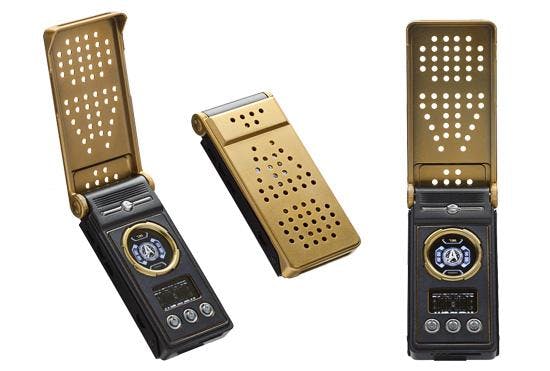
I want to say the phaser, but only because I love what we did with it. But I really believe it's the communicator. The reason being is the communicator, I think, when it first flashed on a screen way back in the day, that must have sparked someone's idea to create the cell phone. That communicator, I think, today is the spark that has launched a million smart phones.
Let’s go with the phaser. How tough was it to get that right?
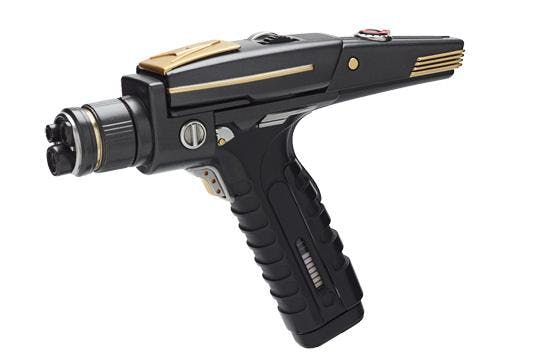
Every day was terrifying with the phaser. One-hundred percent terrifying. And I say that because we looked at the original phaser, at its lines, its colors, the design of it, the shape of it, its ergonomics. It's such a high-tech piece already. How do you go back in time 10 years and try to find where it was 10 years before we originally see it? Knowing also that this thing was going to be a toy, and was going to be in museums and galleries? It's a terrifying process for a Props Master to take on a prop that you already know is going to be analyzed, studied and played with for years to come. Ultimately, the back and forth between myself and one of my props designers, Ray Lai, who designed the majority of the Federation line, was incredibly rewarding because when we look at that phaser, man, I think we nailed that one.
What was your single favorite prop from season one?
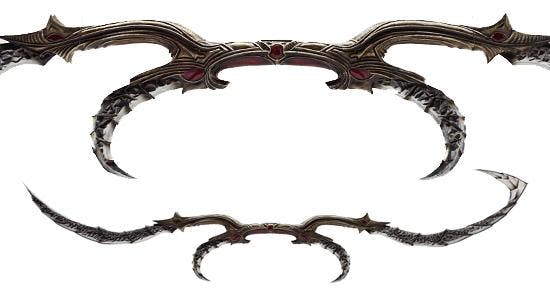
There's a lot of them. I think for me the phaser. The phaser is definitely up there. The tricorder's up there. They're all so awesome. We really had fun with the bat'leth. We took some liberties, obviously, with the Klingon designs and trying to update them a little bit and give them a fresher look. And that definitely washed over the design of the props as well. The bat'leth, there's a lot that went into that. The material, the look of it, the backstory behind it. It was a real collaborative experience building those because there was a lot of experimentation, a lot of sampling, a lot of back and forth between myself, the shop, the producers, the designers, really trying to get it right. It took a long time, and it was worth it because the item, the finished prop, I think is just more than a prop. It's a piece of art.
Let’s discuss Emperor Georgiou's sword and your visit to Michelle Yeoh at the airport in Toronto…
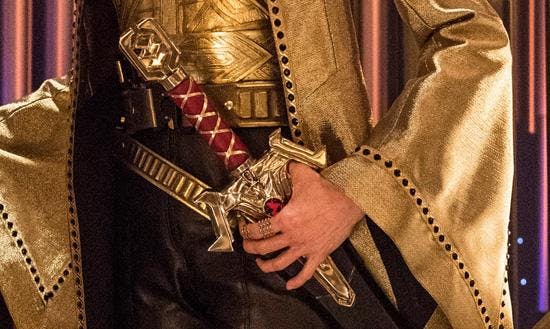
One of my favorite sword makers is a guy named Gary Zahradka from Omega Artworks. He's a fantastic sword maker. When we knew we were doing a sword, I gave him a call right away. We didn't have a lot of turnaround time. We had already designed it. I shipped him the design and asked him if he could do this broad sword in almost, basically a three-week turnaround, and he gladly accepted. He's a Star Trek fan. He shipped me up a wooden version of it to make sure that the size was going to be right for Michelle. She's not the tallest person on the planet. So, we really had to make sure that the size was right. I knew the weight wasn't going be right, and Michelle, basically every time I see her, gives me a kick for the weight. She loved the way it looked, but it was too heavy for her. But that's what you have to deal with, I guess.
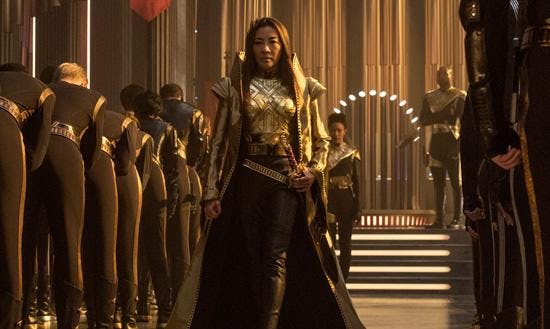
We got the wooden stand-in sword. I called Michelle’s assistant and said, "I need to get this into Michelle's hands. We need to photograph her with it, make sure that it's the right size." The response was, "She's just left set. She's on her way to the airport, but give her a call." So, I called Michelle and was like, "Hey Michelle, it's Mario. I've got the sword and I really need to get it into your hands because we have to go into production with it tomorrow. Otherwise, we're not going to get it back in time for the shoot." She was super. She made sure we were able to meet up and she gave me all the right info, and I raced to the airport. Somehow, I got there ahead of them. And I ran into the airport with this sword wrapped up in a towel. I went straight to the security information desk and said, "Hi. I don't want to alarm you, but I'm carrying a sword that I really need to take pictures of with an actor who's arriving here in a few minutes.” And the oddest thing happened. Without blinking, security was just like, "Oh sure. We've got this boardroom for you set aside over here."
That's crazy...
So, we were led into the boardroom, and Michelle was escorted into the boardroom. We took pictures with the sword. She went off on her flight and I went back to the builders, knowing exactly what size we needed. But it was the strangest thing not to be tackled right away by security.
Visit StarTrek.com again tomorrow to read the second half of our exclusive Moreira interview.

